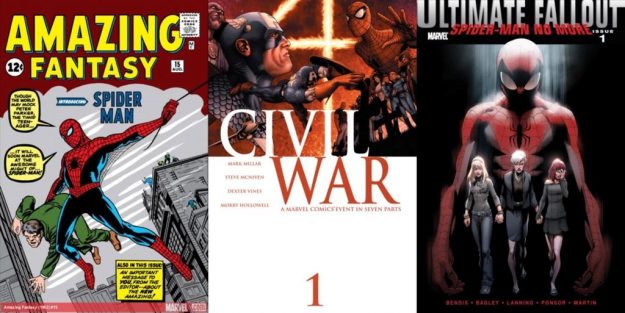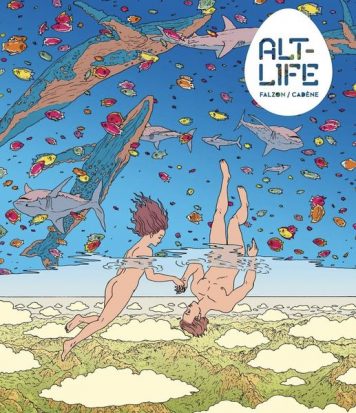Related Resources
Here at BIOWARS, we’re big fans of comic books.
Aside from making art on our own, we like to keep an eye on other talented artists and discuss comic book art with them.
Today, we’re very excited to welcome Sean Damien Hill — an artist behind the latest issues of DC/Milestone’s Blood Syndicate Season 1 #4 & #5! Sean created amazing, expressive pencil art for these issues!
He also worked with Marvel during 2021’s Black History Month!

1. Sean, you’ve worked with DC/Milestone on Blood Syndicate – wow! How did that collaboration come about?
I did a one-page Blue Marvel story with writer Cody Zigler for Marvel Voices: Legacy.
Marquis Draper, an editor over at Milestone/DC comics had seen it, and he contacted me to help out with issue 4 of Blood Syndicate.
It was really intimidating honestly.
I remember reading that book when I was younger with Chris Williams (CrissCross) as the artist.
Now here I am, helping out on a revamped version of the book with Chris as the series artist. I was crazy nervous because I still love his work and still learn a lot from it.
2. Tell us a little bit about the project itself, specifically, how much freedom did you have to make the characters your own? Where can we observe your unique touches?
Blood Syndicate: Season 1 #4
There was a point in this book where I thought, Holly needs a hug or somethin pic.twitter.com/Jur4jWCG71
— Sean Hill (@SeanDamienHill) August 22, 2022
So, I was trusted probably more than I was ready for, but I didn’t have to design characters too much.
I was very much trusted to just draw the way I draw, no one wanted me copying anything. They definitely let me have my own voice and style on those books, especially on issue 5.
3. You also drew Blue Marvel for Marvel in honor of Black History Month in February 2021. And he looks amazing! What did that experience look like?
Well, I was in the middle of one Luke Cage project with Ho Che Anderson and I got asked if I would do a Blue Marvel page for Marvel Voices.
Now, Blue Marvel is one of my favorite Marvel characters, so I would’ve bent over backwards to draw that guy for them. It was definitely a bucket list character though; I hope I get to do more with him.

4. How did you achieve such a fascinating interplay of light and shadows on Blue Marvel?
View this post on Instagram
I think it comes from my art influences growing up.
As a kid, my mom had two huge books I was obsessed with.
One was The Stand by Stephen King with all the Bernie Wrightson art and Paradise Lost with all the art from Gustave Doré.
I think that kind of stuff caused me to be drawn to more details and well-rendered illustrations. So, I was always trying to get myself to understand the differences between cast shadow, form shadow anatomy all that stuff.
5. What does working for two of the world’s biggest comic book publishers look like? How different are those experiences from other projects you did?
I’ve been doing comics for a while, but I’ve worked mostly in the indie market. I never thought I’d be doing anything for DC or Marvel.
So, it was really surprising being contacted by them for anything.
The difference for me so far is that when you’re doing indie work, you’re kind of always treading new ground with new material. Trying to find ways to define something that’s new and not seen before. You can almost do anything.
But when you’re given a project for a DC or Marvel property, you still have to tread new ground but it comes more from a place of adding your voice to a character’s overall narrative. That’s what I did when I was working on Blood Syndicate. I have the freedom to add to the legacy but I just got to be respectful of that legacy.
6. What’s especially fascinating about your art is the way you draw facial expressions and depict different emotions with such intensity. What would you say is the key to capturing and communicating emotion in comic book art?
View this post on Instagram
The thing about doing comic art is you do a lot of work to make yourself a good enough artist only to not be an artist but a storyteller.
Without any emotion being expressed, readers tend not to engage too much.
No matter how cool you make stuff, it just comes off as empty if the characters aren’t shown experiencing those things.
7. Your line work and attention to detail are majestic, and that shows on each of your Insta posts so far. How did you develop such a unique style?
I really think it was those first art influences.
Wrightson and Doré made me obsessed with techniques on how to render things as naturally as possible.
I did have a lot of help in learning though.
I had a mentor named Kofi Tyus, an artist in Washington DC where I come from, who was pretty much like a father to me.
I also went to “Duke Ellington,” an arts high school in DC, and even a bit in college. I remember figure drawing being especially helpful in college.
8. What makes the process of drawing cover art different than drawing other types of comic book illustrations? How do you choose what to depict on a cover?
View this post on Instagram
I think a major difference is when doing interior work you have a lot more real estate to work out a story. You have to think a lot more about how to keep the reader engaged and not let them slip away.
With cover work, you have to narrow down the overall narrative into a single image.
You have to reach out to the reader instead of just keeping them engaged.
The funny thing is cover work can be a lot more difficult conceptually. But it’s a lot less intense compared to doing sequential storytelling.
9. What does your collaboration with the colorists look like? How involved are you in the process of coloring your illustrations?
View this post on Instagram
Honestly, I prefer to be really hands-off with colorists working on my stuff.
I’m really more interested in how they interpret my linework rather than them sticking to whatever expectations I may have had with the work.
Besides, I had a lot of good colorists work on my stuff over the past few years.
10. And lastly, could you tell us what you’ll work on next? Any new DC or Marvel projects on the horizon?
Yeah, I got two Marvel projects coming.
One has already been announced with issue 3 of Wakanda. That story will be a survival story with a young Erik Killmonger. I’m teaming up with Ho Che Anderson again, and Lebeau Underwood inking on this.
The other project hasn’t been announced yet so stay tuned!
Thank you for doing this interview with BIOWARS, Sean! It was so good to welcome you in the BIOCOSMOS. See you soon!
If you’re interested in getting to know other comic book artists, check out these interviews with Lucius Cross and Gonçalo Lopes. You can also take a look at artist profiles, including Jack Kirby and Jim Lee.









